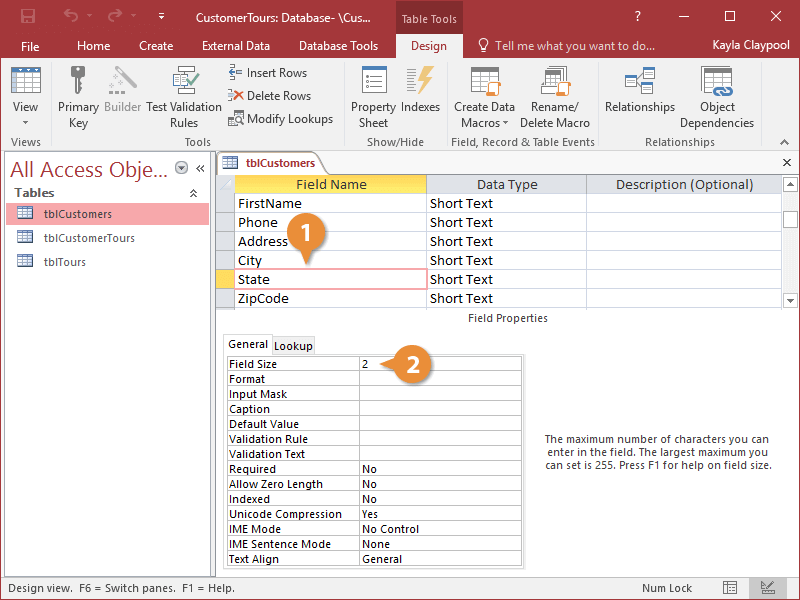| Number Field Sizes |
| Byte |
Integers from 0 to 255. |
Very small – not usually a good choice. |
| Integer |
Integers from -32,768 to 32,767. |
Works for most numbers without decimals. |
| Long Integer |
Integers from -2,147,483,648 to 2,147,483,647. |
Works for most numbers without decimals. |
| Single |
Positive or negative numbers up to 38 zeroes and 7 decimal places. |
Good for large numbers with decimals. |
| Double |
Positive or negative numbers up to 308 zeroes and 15 decimal places. |
For really big numbers with decimals. |
| Replication ID |
Long unique codes. |
Used when you want to merge copies of a database. |
| Decimal |
Positive or negative numbers up to 28 zeroes and 28 decimal places. |
Good for numbers with a lot of decimals. |

